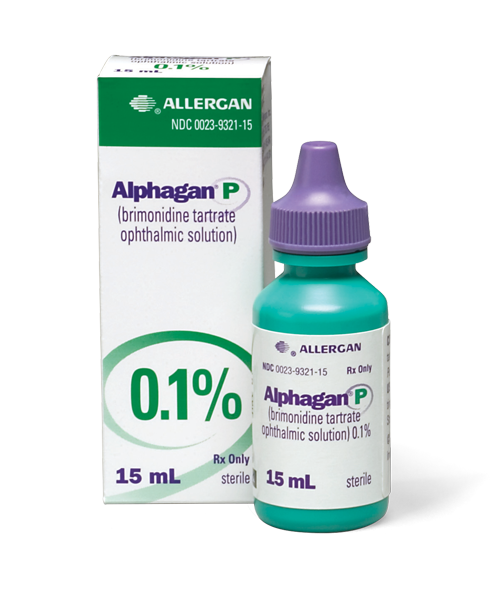Make sure you get the green bottle

TIPS FOR TREATMENT WITH
ALPHAGAN® P 0.1%
It’s important to lower your high eye pressure caused by glaucoma by using ALPHAGAN® P 0.1% 3 times a day as prescribed by your doctor.

Use your eye drops at the same time every day (or as your doctor recommends).

Add using your eye drops to other daily routines such as brushing your teeth before bed.

Keep your eye drops in the same place so you always know where they are.

Ask a friend or family member to help you remember. Each day, they can ask, “Did you remember to put your eye drops in today?”

Set alarms and reminders on clocks, cell phones, and computers to help you.

Put a reminder note to yourself in a prominent location, such as on your refrigerator.

Draw an “X” through each day of your calendar after you use your eye drops.
USE
ALPHAGAN® P (brimonidine tartrate ophthalmic solution) 0.1% or 0.15% is used for the reduction of high eye pressure, also called intraocular pressure (IOP), in patients with open-angle glaucoma or ocular hypertension.
IMPORTANT SAFETY INFORMATION
Do not use ALPHAGAN® P 0.1% and 0.15%:
- If you are allergic to any of the ingredients
- In neonates and infants (under the age of 2 years)
ALPHAGAN® P 0.1% and 0.15% may make syndromes associated with vascular insufficiency (conditions that result in reduced blood flow) worse.
ALPHAGAN® P 0.1% and 0.15% should be used with caution in patients with:
- Depression
- Cerebral or coronary insufficiency (conditions that result in reduced blood supply to the brain or heart)
- Raynaud’s phenomenon (a condition that results in reduced blood supply, most commonly, to the fingers and toes)
- Orthostatic hypotension (a form of low blood pressure that occurs when standing after sitting or lying down)
- Thromboangiitis obliterans (Buerger’s disease) (a condition that results in reduced blood supply to the arms and legs, usually presenting in fingers and feet)
- Severe cardiovascular disease (a range of conditions affecting the heart)
Avoid allowing the tip of the dispensing bottle to touch the eye, anything around the eye, fingers, or any other surface to avoid contamination by common bacteria known to cause eye infections (bacterial keratitis). Using contaminated solutions can cause serious damage to the eye and loss of vision. Always replace the cap after using. Do not use after the expiration date marked on the bottle or if the solution changes color or becomes cloudy.
If you have eye surgery, eye trauma or infection, or develop any eye reactions, immediately consult with your physician about continuing the use of ALPHAGAN® P 0.1% and 0.15%.
If you use more than one drug in the eye, be sure to wait at least 5 minutes between each drug application.
As with other similar medications, ALPHAGAN® P 0.1% and 0.15% may cause fatigue and/or drowsiness in some patients. Patients who engage in hazardous activities should be aware of the potential for a decrease in mental alertness.
The most common side effects (10%-20%) in the clinical trial include allergic eye reaction, eye redness, and itchy eye. Other side effects (5%-9%) include eye burning sensation, inflammation of the conjunctiva (“pink eye”), high blood pressure, dry mouth, and visual disturbance. These are not all of the possible side effects with ALPHAGAN® P 0.1% and 0.15%. Tell your doctor if you have any side effect that bothers you or that does not go away.
Please see full Prescribing Information for ALPHAGAN® P at https://www.rxabbvie.com/pdf/
alphagan_pi.pdf.
You are encouraged to report negative side effects of prescription drugs to the FDA.
Visit www.fda.gov/medwatch or call
1-800-FDA-1088.
If you are having difficulty paying for your medicine, AbbVie may be able to help. Visit AbbVie.com/myAbbVieAssist to learn more.



